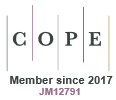Te marine algae of Lord Howe Island (NSW): The dictyotales and Cutleriales (Phaeophyta).
BM Allender and GT Kraft
Brunonia
6(1) 73 - 130
Published: 1983
Abstract
Lord Howe Island (31°33'S., lat.; 159°05'E. long.) lies c. 600 km east of the Australian mainland and is fringed by the world's southernmost coral reefs. It possesses a rich marine flora which is heavily dominated by brown algae of the order Dictyotales, of which 22 species in 11 genera occur on the island. Most species show tropical affinities, although several have restricted occurrences on the central eastern seaboard of the continent in addition to Lord Howe, and a few are recorded from the Kermadec Islands some 2150 km further east. Two species (Distromium didymothrix; Pachydictyon aegerrime) and two varieties (Stypopodium flabelliforme var. rhabdoides; Dictyota bartayresii var. plectens) are described as new and are at present known only from the island, while Padina boergesenii has been erected for a well known Caribbean species also found at Lord Howe and which, following examination of type material, can no longer be properly referred to P. gymnospora (Kuetz.) Vickers. Two new combinations [Stypopodium australasicum (Zan.) Allender & Kraft; Dilophus intermedius (Zan.) Allender & Kraft] are also made. The order Cutleriales is represented at Lord Howe by a single newly described species, Cutleria mollis, whose abundant sporophytic (Aglaozonia) stage is very Zonaria-like in habit.https://doi.org/10.1071/BRU9830073
© CSIRO 1983


